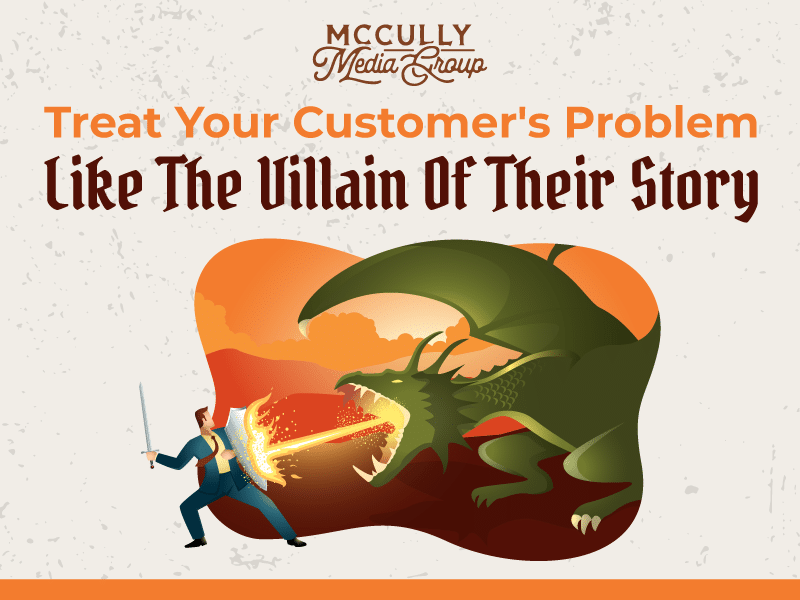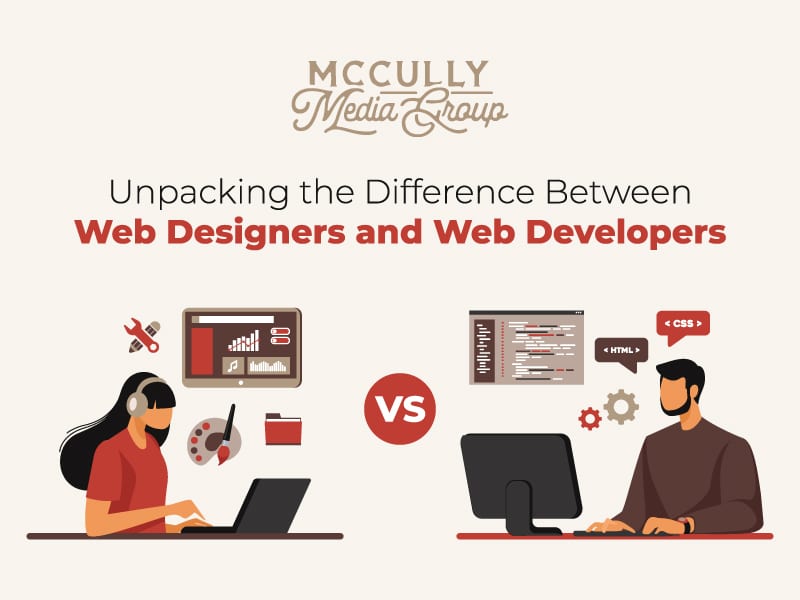Would you like to learn how to treat and solve your customer’s problem using the StoryBrand framework? You’re in the right place! You need to think like a storyteller to create a marketing strategy to engage and convert your customers. The reason for that is humans are hardwired to be drawn to stories. We process and remember stories more effectively than facts. Stories speak to our emotions and follow a pattern the human brain is familiar with.
One of the most effective ways to craft a story that resonates with your customers is by using the StoryBrand framework.
StoryBrand is a marketing framework that centers on the customer’s problem as the villain in their story. It takes your customers’ issues, fears, and frustrations and turns them into an antagonist for your product or service to overcome. By helping customers solve their problems, you become the guide that allows the customer to become the hero of their story.
What Is StoryBrand, and How Can It Help Businesses Connect With Their Customers?
At its core, the StoryBrand framework relies on the idea that stories are powerful tools for activating emotions in customers, allowing them to relate better to a company’s values and mission. Through StoryBrand, businesses can create compelling stories to reach their target audience and build trust, loyalty, and understanding.
When brands use StoryBrand principles, they can expect improved customer understanding, increased brand visibility and recognition, and higher engagement with marketing efforts, leading ultimately to lasting loyalty and greater sales.
How Do You Identify the Customer’s Problem?
Successful stories follow this pattern. There is a character. The character wants something, but something is standing in their way. This barrier is the problem. The story follows the character as they overcome the problem and get what they want.
When screenwriters personify the problem as the villain, it creates a mighty struggle that customers understand and can relate to. Think David and Goliath, Peter Pan and Captain Hook, or Dorothy and the Wicked Witch of the West.
A StoryBrand villain is a way of personifying an external problem, an internal problem, and a philosophical problem. These problems can be large or small, but they all stand in the way of your customer getting what they want. To identify the StoryBrand villain in the customer’s story, ask yourself:
- What does your customer want?
- What are the consequences if they don’t take action to achieve their goals?
- Who or what is standing in their way?
What Types of Problems Do Your Customers Face?

Customers face external, internal and philosophical problems. Let’s look at how these problems manifest at the beginning of the billion-dollar Harry Potter franchise. Harry’s external problem is that Voldemort, an evil wizard who killed Harry’s parents, is after him. The internal problem is that Harry has little self-confidence and struggles to master his magical powers. The philosophical problem is that, in fighting Voldemort, Harry is engaging in the age-old struggle between good and evil. Voldemort wants to cause chaos, destruction, and death, whereas Harry is fighting for justice, peace, and love.
When screenwriters solve all these problems in one shot, our brain releases serotonin, creating an emotional experience we remember.
Use the StoryBrand Framework to Solve Your Customer’s Problem: External Problem
External problems are the obvious problem that the customer faces. For example, they want to lose weight, or they need to find a new job. This is how most companies market themselves, by trying to solve the external problem. However, people don’t tend to buy products or services to solve an external problem. Instead, they’re motivated to resolve how they feel about the problem.
Use the StoryBrand Framework to Solve Your Customer’s Problem: Internal Problem
Internal problems are about the frustration, sense of failure, insecurity, or other emotions customers feel because of the external situation. Returning to our weight loss example, internal problems could include feelings of insecurity, low self-esteem, or a lack of motivation. The internal issues related to needing a new job could consist of feelings of failure when customers compare themselves to more successful siblings or peers or worry about providing for their families because they don’t feel they’re earning enough.
Use the StoryBrand Framework to Solve Your Customer’s Problem: Philosophical Problem
Philosophical problems are the deeper, more philosophical issues customers face when trying to solve their external and internal problems. For example, the weight loss customer is up against a culture in which food production companies prioritize making a profit over health concerns. The job seeker is up against an economic system that rewards privilege and punishes those without the right connections.
Find your StoryBrand villain by asking:
- Who stands to profit from my customer having this problem?
- What obstacles are they up against that are unfair or unjust?
- What societal issues are at play here?
When you use the words “you should feel” or “you deserve to feel” in your stories and messaging, it lets the customer know that you understand how important their problem is and how it affects them on a deeper level.
How Do You Solve Problems for Your Customers?
To solve your customer’s problems, you need to understand their external, internal, and philosophical issues. Once you have identified them, you can create messaging that speaks to all three levels.
You can use the story you’re telling about your customer’s problem to create a sense of urgency that encourages them to take action now instead of later. You can do this by highlighting the consequences of not taking action, like missed opportunities, increased stress, or even physical danger.
How Do You Position Your Customer as a Leader?
When your customer is presented with a problem, they want to feel like they can be the one to solve it. To make this happen, you need to position them as the hero. Your goal should be to give them the confidence and tools they need to overcome the problem and come out victorious.
You can do this by creating content that speaks directly to their challenges, shares stories of other customers who have been successful in similar situations, and provides resources that will help them succeed. By providing your customer with a sense of empowerment, you can help them become the leader they want to be.
Help Your Customers Slay Their Dragons
Customers always have a problem they need to solve, and this problem can be viewed as the villain they are facing in their own story. At the same time, your company and its products or services help the customer become the hero that battles this StoryBrand villain. By understanding the customer’s point of view and treating their problem as the villain, marketers and sales professionals can craft more effective messages that illustrate how their solutions can help.
This narrative-based approach provides an emotional and practical understanding of how your product works, enabling customers to see themselves in the story presented. It also helps to build trust between businesses and their customers by demonstrating that you understand their issues and are willing to fight for them. Ultimately, viewing customer problems as villains in stories is a powerful tool for crafting marketing and sales messaging that resonates with customers on a deep level.
Let McCully Media Group Help
Most businesses have a website, but only some of them are actually effective at turning visitors into customers.
Your website is probably not converting as many visitors into customers as it could be because you’re not creating a story based on the customer’s problem.
McCully Media Group can help you turn your customer’s problem into the villain to get more conversions and generate more revenue. We specialize in creating powerful StoryBrand websites that focus on the customer’s problem and how your product or service solves it.
Schedule your free consultation today.
Learn More:
What Is A StoryBrand BrandScript?
7 Steps to Creating the Perfect StoryBrand Narrative





